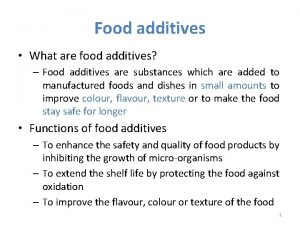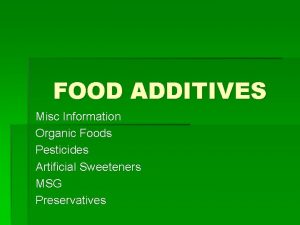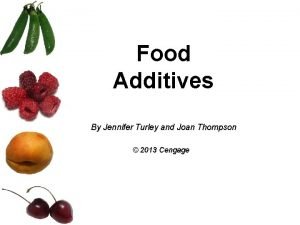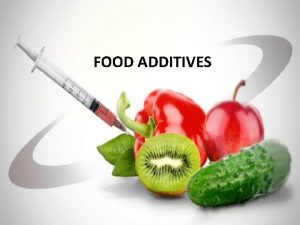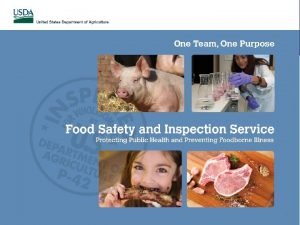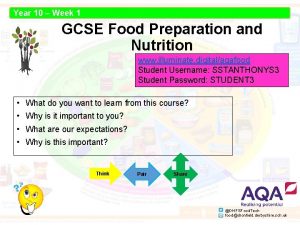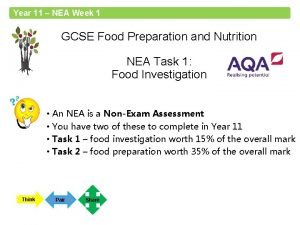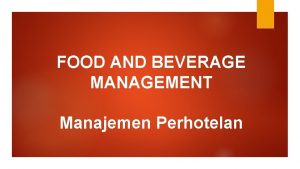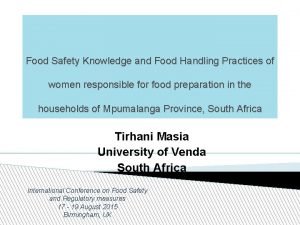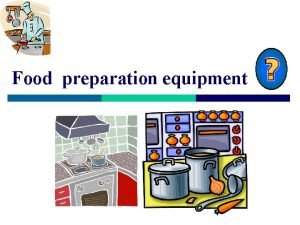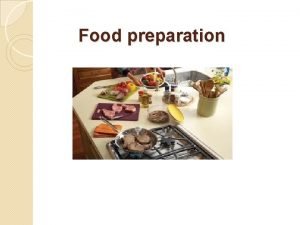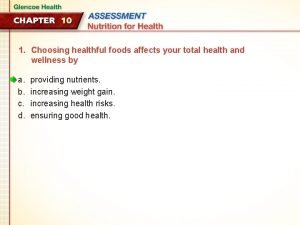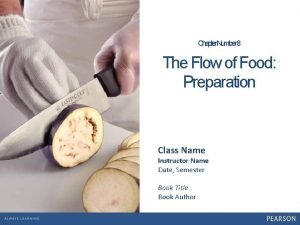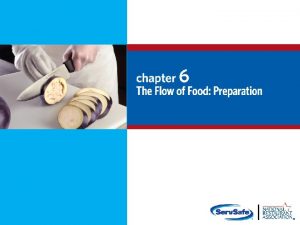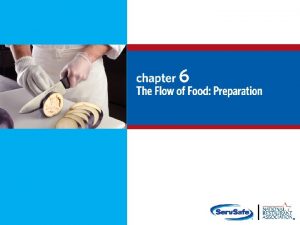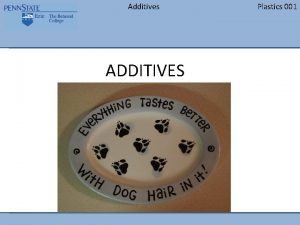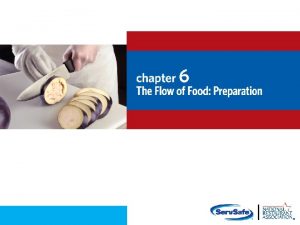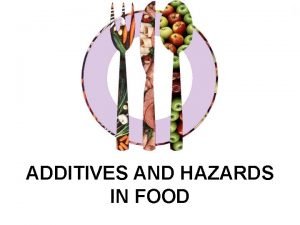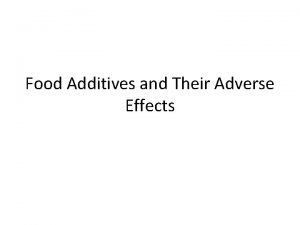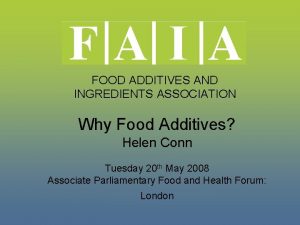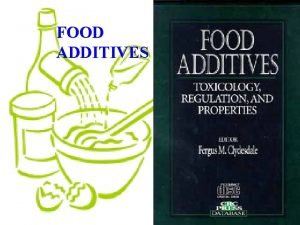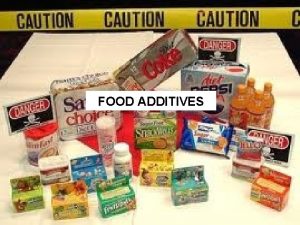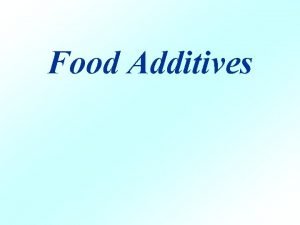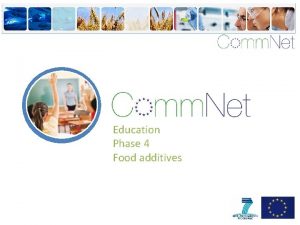General Preparation Practices Food and color additives 6





















- Slides: 21


General Preparation Practices Food and color additives: 6 -2 l Only use additives approved by your local regulatory authority l NEVER use more additives than are allowed by law l NEVER use additives to alter the appearance of food l Do NOT sell produce treated with sulfites before it was received in the operation l NEVER add sulfites to produce that will be eaten raw

General Preparation Practices Present food honestly: l l 6 -3 Do NOT use the following to misrepresent the appearance of food o Food additives or color additives o Colored overwraps o Lights Food not presented honestly must be thrown out

General Preparation Practices Corrective actions: l 6 -4 Food must be thrown out in the following situations o When it is handled by staff who have been restricted or excluded from the operation due to illness o When it is contaminated by hands or bodily fluids from the nose or mouth o When it has exceeded the time and temperature requirements designed to keep food safe

Thawing ROP Fish 6 -5 l Frozen fish received in ROP packaging must be thawed carefully. l If the label states that the product must remain frozen until use, then remove the fish from the packaging: o Before thawing under refrigeration. o Before or immediately after thawing under running water.

Prepping Specific Food Produce: l Produce can be washed in water containing ozone to sanitize it o l 6 -6 Check with your local regulatory authority When soaking or storing produce in standing water or an ice-water slurry, do NOT mix o Different items o Multiple batches of the same item

Prepping Specific Food Ice: 6 -7 l NEVER use ice as an ingredient if it was used to keep food cold l Transfer ice using clean and sanitized containers and scoops l NEVER hold ice in containers that held chemicals or raw meat, seafood, or poultry

Prepping Specific Food Ice: 6 -8 l Store ice scoops outside ice machines in a clean, protected location l NEVER use a glass to scoop ice or touch ice with hands

Preparation Practices That Have Special Requirements You need a variance if prepping food in these ways: 6 -9 l Packaging fresh juice on-site for sale at a later time, unless the juice has a warning label l Smoking food to preserve it but not to enhance flavor l Using food additives or components to preserve or alter food so it no longer needs time and temperature control for safety l Curing food

Preparation Practices You need a variance if prepping food in these ways: 6 -10 l Packaging food using a reducedoxygen packaging (ROP) method l Sprouting seeds or beans l Offering live shellfish from a display tank l Custom-processing animals for personal use (i. e. dressing a deer)

Cooking Requirements for Specific Food Minimum internal cooking temperature: 165˚F (74˚C) for 15 seconds 6 -11 l Poultry—whole or ground chicken, turkey, or duck l Stuffing made with fish, meat, or poultry l Stuffed meat, seafood, poultry, or pasta l Dishes that include previously cooked, TCS ingredients

Cooking Requirements for Specific Food Minimum internal cooking temperature: 155˚F (68˚C) for 15 seconds l l l 6 -12 Ground meat—beef, pork, and other meat Injected meat—including brined ham and flavor-injected roasts Mechanically tenderized meat Ratites including ostrich and emu Ground seafood—including chopped or minced seafood Shell eggs that will be hot-held for service

Cooking Requirements for Specific Food Minimum internal cooking temperature: 145˚F (63˚C) for 15 seconds 6 -13 l Seafood—including fish, shellfish, and crustaceans l Steaks/chops of pork, beef, veal, and lamb l Commercially raised game l Shell eggs that will be served immediately

Cooking Requirements for Specific Food Minimum internal cooking temperature: 145˚F (63˚F) for four minutes l Roasts of pork, beef, veal, and lamb l Alternate cooking times/temperatures o o o o 6 -14 o 130˚F (54˚C) 131˚F (55˚C) 133˚F (56˚C) 135˚F (57˚C) 136˚F (58˚C) 138˚F (59˚C) 140˚F (60˚C) 142˚F (61˚C) 112 minutes 89 minutes 56 minutes 36 minutes 28 minutes 12 minutes 8 minutes

Cooking Requirements for Specific Food Minimum internal cooking temperature: 135˚F (57˚C) l 6 -15 Fruit, vegetables, grains (rice, pasta), and legumes (beans, refried beans) that will be hot-held for service

Partial Cooking During Preparation If partially cooking meat, seafood, poultry, or eggs or dishes containing these items: 6 -16 l NEVER cook the food longer than 60 minutes during initial cooking l Cool the food immediately after initial cooking l Freeze or refrigerate the food after cooling l Heat the food to its required minimum internal temperature before selling or serving l Cool the food if it will not be served immediately or held for service

Consumer Advisories If your menu includes raw or undercooked TCS items, you must: l l 6 -17 Note it on the menu next to the items o Asterisk the item o Place a footnote at the menu bottom indicating the item is raw, undercooked, or contains raw or undercooked ingredients Advise customers who order this food of the increased risk of foodborne illness o Post a notice in the menu o Provide this information using

Consumer Advisories The FDA advises against offering these items on a children’s menu if they are raw or undercooked: 6 -18 l Meat l Poultry l Seafood l Eggs

Operations That Mainly Serve High-Risk Populations NEVER serve: 6 -19 l Raw seed sprouts l Raw or undercooked eggs, meat, or seafood o Over-easy eggs o Raw oysters on the half shell o Rare hamburgers

Storing Food for Further Cooling When storing food for further cooling: l Loosely cover food containers before storing them l Food can be left uncovered if protected from contamination o 6 -20 Storing uncovered containers above other food, especially raw seafood, meat, and poultry, will help prevent crosscontamination

Reheating Food reheated for immediate service: l Can be reheated to any temperature if it was cooked and cooled correctly Food reheated for hot-holding: 6 -21 l Must be reheated to an internal temperature of 165˚F (74˚C) for 15 seconds within two hours l Reheat commercially processed and packaged ready-to-eat food to an internal temperature of at least 135˚F (57˚C)
 Natural and artificial food additives
Natural and artificial food additives Food technology revision
Food technology revision Color additives amendment
Color additives amendment Food additives examples
Food additives examples Organic food additives
Organic food additives Examples of intentional food additives
Examples of intentional food additives Food additives definition
Food additives definition Monophasic liquid prepared with
Monophasic liquid prepared with Polymer additives definition
Polymer additives definition Incidental additives examples
Incidental additives examples Feed additives classification
Feed additives classification High performance additives
High performance additives Unit 2 food food food
Unit 2 food food food Sequence of food chain
Sequence of food chain Illuminate aqa food
Illuminate aqa food Nea 1
Nea 1 Food and beverage preparation service management
Food and beverage preparation service management Improper food handling practices
Improper food handling practices Food preparation equipment examples
Food preparation equipment examples Another definition of
Another definition of Your body uses carbohydrates by breaking them down into *
Your body uses carbohydrates by breaking them down into * Flow of food: preparation
Flow of food: preparation



